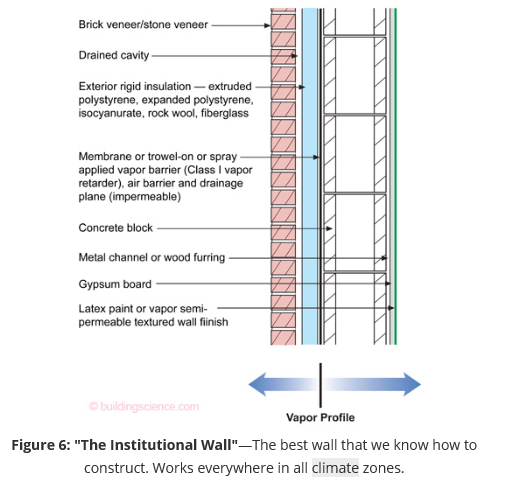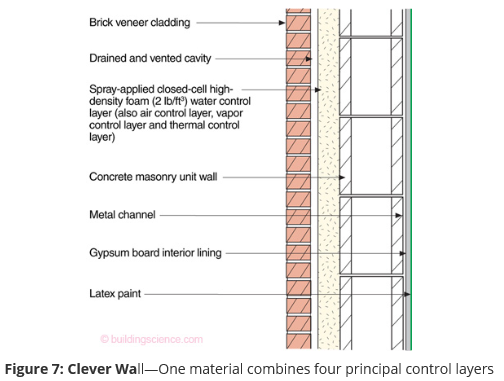The past two weeks we have discussed K-factor, R-value and thermal performance, in No More “Effective R-value”, and why R-value Does Not Tell the Whole Story.
But, to truly understand how spray foam affects buildings and be able to teach this to your employees and customers, it helps to think a little about the fundamentals of building physics – or how buildings work. Taking this one step further, you should know the different control layers in a building separation, the purpose of these control layers and the natural flow of liquid, air, moisture and heat around a building.
The best synopsis I have ever read about control layers is from Joseph Lstiburek with Building Science Corporation in his post, BSI-001: The Perfect Wall.
As he explains, after providing structural support, a wall is intended “…to keep the outside out and the inside in.” This means managing rain, air, vapor and heat in such a way as to create a comfortable interior environment and extend the useful life of the building.
Joe goes on further to explain that there is an order of importance for the control layers and protection of the structure:
…if you can’t keep the rain out don’t waste your time on the air. If you can’t keep the air out don’t waste your time on the vapor.
The reason for the order of importance is the magnitude of effect that each of these components has on the structure and the environment.
- Liquid water, like rain, is most damaging
- Then comes air, because it can carry a lot of water
- Then vapor, because when it accumulates, it can condense to liquid
- And lastly, there is temperature, heat transfer and UV exposure
The damage these components cause includes material decay and movement (expansion and contraction), none of which is favorable to building materials in the long run.
Not only is there an order of importance for these control layers, but Joe further explains that there is an ideal location. In particular, since “…most of the bad stuff comes from the outside…”, these control layers should be placed on the outside of the structure, to protect the structure and the interior environment, from all of the exterior contaminants – rain, air, vapor, heat, etc.
And, combining all of this together, here is the design that Mr. Lstiburek and Building Science Corporation describe as the 500-year wall:
He goes on to say, “A clever version of this first wall is where spray-applied closed-cell high-density foam is used to combine the four principal control layers in one material.” Here is the detail that he offers, titled “The Clever Wall”:
Understanding these control layers, and how spray foam insulation can play a role in these designs, will help you and your team explain how spray foam changes the way buildings work.
Stay tuned next week as we discuss the natural flow of liquid, air, moisture and heat around a building.
Subscribe here to keep in touch with Spray Foam Advisor and get your FREE copy of 25 SPF Frequently Asked Questions and a PRIVATE link to Robert Naini’s SPFA Breakout Session, “3 Ways to Close More Sales with Building Science.”




